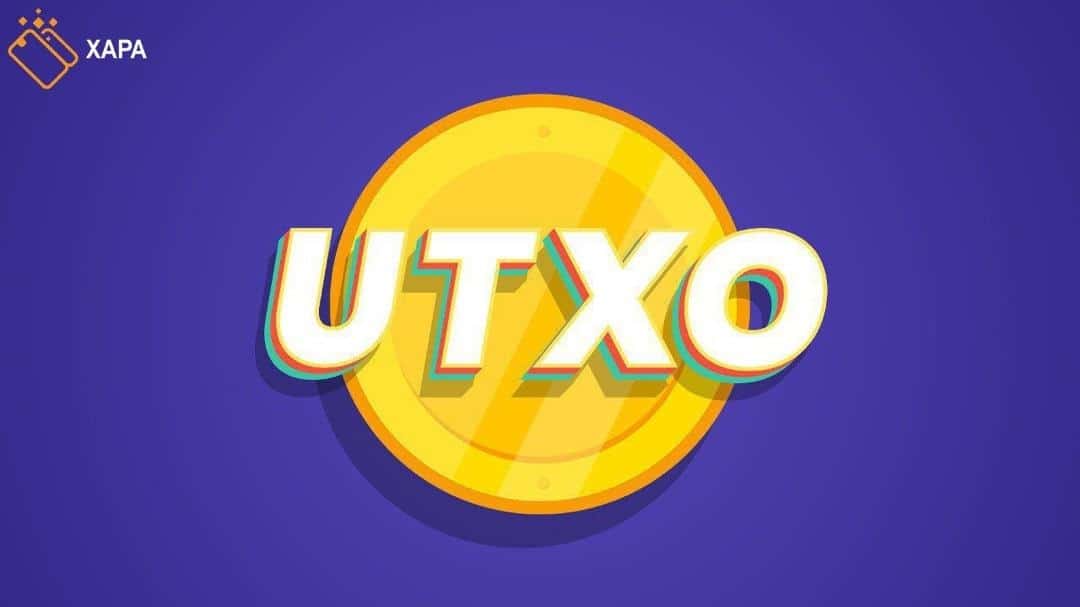
For understanding that what is Bitcoin, we should note that Bitcoin is a virtual currency that rose to $ 13,000 in early 2018, rose to fame, and was a combination of creativity, overcoming legal barriers, and bypassing intermediaries in various financial and banking transactions that facilitate financial transactions.
It made it possible on an international level. Therefore, in the short time of his emergence, it was able to attract a lot of attention.
As well as, for realizing that what is Bitcoin classic, we should be aware of that after bitcoin, many cryptocurrencies were born with similar features. Cryptocurrencies have extraordinary features and capabilities and that is why those have become very popular after only about 10 years of being on the market.
Various cryptocurrencies, such as bitcoin, operate in large network platforms called blockchains. This network has a lot of users and it is not possible to access and capture its data. An extensive, large number of users, the possibility of violations and fraud in the network, as well as the lack of network monitors, make it a free and effective environment for communication activities in various fields. More precisely, bitcoin operates in the context of the decentralized network of the Chinese blockchain.
In short, the purpose of bitcoin is to securely transfer or store money. Therefore, it can be considered a secure digital payment and banking system. Bitcoin restores real control of the money to individuals, and with a special password called a private key, only the owners of those keys will be able to spend and transfer the bitcoins.
On the other hand, digital money has always had a big problem called “double spending”. This was not the case with paper money and physical money, for example, you could not re-use the money you spent on a TV to buy another product. But in a digital world where you can copy everything with just one click, it is important to avoid double-spending.
If digital money is like a file, you can spend it in two separate places at the same time, and you have made your purchases so that the sellers know about it. That is why, before the advent of digital currencies, there was always a central organization to check individuals’ inventories to prevent this from happening.
But with the advent of this digital currency, the existence of a central organization was abolished, and transactions were reviewed by all members of the network. So, another important goal of Bitcoin is to solve the problem of spending twice without trusting someone else.
Bitcoin(BTC)History
Bitcoin was born in late 2008. You probably remember the big financial crisis of 2008 and the events of that time from the news. It was around this time that an unknown individual or group, alias Satoshi Nakamoto, sent an article to many cryptographers talking about new e-money. In this article, also known as White Piper, Satoshi Nakamoto described bitcoin and how it works.
A few months later, in early 2009, the Bitcoin network began operating. Satoshi Nakamoto was in the early years of the project, fixing its shortcomings with other developers joining the project until it disappeared in late 2010. More than 10 years after the creation of Bitcoin, the identity of Satoshi Nakamoto has not yet been determined. Satoshi Nakamoto can be an individual, a group of programmers, or even a secret government organization.
There are many hypotheses about Satoshi Nakamoto’s identity, and many more claimants have identified themselves as Satoshi Nakamoto. However, none of them have enough evidence to prove their claim.
Read More: The Long term Effect of Bitcoin
What is Bitcoin used for?
Transferring and spending bitcoins does not require permission from banks or any other entity. On the other hand, you may have heard that bitcoin is the money of criminals and is used to remain anonymous in criminal activities. But apart from the erroneous characteristics that newspapers, news, and media have attributed to Bitcoin, this digital currency has features that distinguish it from other physical and digital currencies.
The basic and important features of Bitcoin are described below:
- No one is in power (not controlled by any individual, group, organization, bank, or government)
- The number of bitcoins is limited (21 million units)
- Transactions are semi-anonymous (Bitcoin transactions are visible to everyone, but the identities of the individuals are not known and only the addresses with their incoming and outgoing addresses can be viewed)
- Transactions are non-refundable (bitcoins sent to the wrong address are non-refundable and you should say goodbye to them)
- Can not be forged (the total number of units is limited to 21 million units and no one can create a fictitious transaction on the network and enter bitcoin outside the existing rules)
- It is easier to carry and transport than gold and physical money
How does Bitcoin work?
Distributed storage of transaction information in Bitcoin is made possible by China Blockchain technology. Blockchain is, in simple terms, a digital notebook whose information is immutably distributed across all nodes.
Blockchain is a broader concept than bitcoin that can have other uses. If we want to show this difference very simply, we can compare China Blockchain to the Internet and Bitcoin to a famous search engine like Google.
On the other hand, for understanding that what is Bitcoin staking and due to the existence of blockchain, nodes keep transaction histories. When one of them wants to send some bitcoins to another, by sending their request in the form of a transaction, the nodes flip through their digital notebooks and obtain the sender’s inventory to ensure that the transaction is feasible.
The digital notebook of nodes consists of sheets that we know as a block in a blockchain and that contain information and data. If the transaction does not violate the rules of the network, the transaction is considered valid and, like the production line of a factory, waits to enter the next stage, the transaction approval process.
Read More: Bitcoin or gold as a Haven?
What is Bitcoin(BTC) mining?
With the start of a race called mining, bus drivers try to get their transactions to their destination faster than others; Because the first driver who succeeds in doing so will receive a good reward from the bus company (network). After selecting the transaction and placing it in their blocks, the miners solve the block puzzle in a competition called extraction that requires energy and processing power.
This mathematical puzzle arises from putting transactions together and passing them through cryptographic processes called hash functions. Solving these puzzles is a difficult task that is done with computer hardware and special devices called miners or ISICs. Finding the answer to these math problems will eventually lead to the confirmation of the transactions in that block.
After finding the math puzzle, the block is placed next to other blocks that have already been solved, in chronological order, and an interconnected chain of blocks is formed, which represents the concept of a block of blocks or a chain of blocks. The process of confirming a transaction by finding a mathematical puzzle is also called the Proof of Work process.
But miners need an incentive to do all of this, including providing special hardware and power consumption. The first miner to succeed in finding the math block puzzle on the network sooner than the others will receive a reward in the form of bitcoin.
Bitcoin price
The first data on the Bitcoin price chart dates to mid-2010 when it traded at a price close to one cent ($ 0.01). From Bitcoin value history inception, this digital currency has witnessed several up and down price cycles. Accordingly, Bitcoin price history in certain periods has been in an upward state, which is called an ascending market, and in other periods, it has been in a downward and decreasing state, which is called a descending market.
In the first uptrend between 2010 and mid-2011, bitcoin rose from about one cent to $ 30, an increase of 3,000 times. The price of this digital currency experienced a sharp decline after this astronomical increase; From mid-2011 to late that year, it saw a 95 percent drop from $ 30 to $ 2.
The second uptrend was moving from $ 2 and growing 600-fold to $ 1,200. This upward trend started in late 2011 and continued until the end of 2013. After this strong growth, the price fell 86 percent to about $ 165 and was trapped in the downtrend market until the end of 2015.
Bitcoin’s third uptrend began in early 2016, pushing Bitcoin to the $ 20,000 price point in December 2017. This growth almost 100 times stopped in 2018. Bitcoin, with a market value of about $ 830.03 billion, ranks first in the market and holds 59.71% of the total market. Each unit of Bitcoin is currently traded for $ 44,526, and its daily trading volume is $ 53.2 billion. Prices have fallen by -5.69% in the last 24 hours.
The highest price of Bitcoin on February 23, 2021 was equal to 58,330.57 dollars, which is currently 23.66% lower than then. The number of units in the circulation of Bitcoin will be 18.64 million and the total number of units will be 21 million. Currently, the most active exchange in which bitcoin is traded is Bit Asset with a share of 6.96% of the daily trading volume.









Jamesgab
Our e-pharmacy provides an extensive variety of pharmaceuticals for budget-friendly costs.
Customers can discover both prescription and over-the-counter remedies for all health requirements.
Our goal is to keep safe and effective medications while saving you money.
Fast and reliable shipping ensures that your purchase gets to you quickly.
Enjoy the ease of getting your meds with us.
https://www.adsoftheworld.com/users/c9d7140d-be3a-4ac0-a3f0-9414c1236989
BenitoTeada
На этом сайте вы найдете клинику психологического здоровья, которая предоставляет психологические услуги для людей, страдающих от тревоги и других психических расстройств. Мы предлагаем комплексное лечение для восстановления психического здоровья. Врачи нашего центра готовы помочь вам справиться с психологические барьеры и вернуться к психологическому благополучию. Профессионализм наших врачей подтверждена множеством положительных рекомендаций. Обратитесь с нами уже сегодня, чтобы начать путь к лучшей жизни.
http://jayintralogistics.net/__media__/js/netsoltrademark.php?d=empathycenter.ru%2Fpreparations%2Fb%2Fbiperiden%2F
BenitoTeada
На этом сайте вы найдете центр ментального здоровья, которая предлагает психологические услуги для людей, страдающих от стресса и других психологических расстройств. Наша комплексное лечение для восстановления ментального здоровья. Наши опытные психологи готовы помочь вам решить психологические барьеры и вернуться к гармонии. Опыт наших психологов подтверждена множеством положительных обратной связи. Свяжитесь с нами уже сегодня, чтобы начать путь к восстановлению.
http://lenderwa.net/__media__/js/netsoltrademark.php?d=empathycenter.ru%2Fpreparations%2Fl%2Flamotridzhin%2F
BenitoTeada
На данной платформе вы найдете учреждение психологического здоровья, которая обеспечивает поддержку для людей, страдающих от тревоги и других психологических расстройств. Мы предлагаем эффективные методы для восстановления психического здоровья. Наши опытные психологи готовы помочь вам справиться с трудности и вернуться к психологическому благополучию. Квалификация наших врачей подтверждена множеством положительных рекомендаций. Обратитесь с нами уже сегодня, чтобы начать путь к лучшей жизни.
http://lilianascenna.com/__media__/js/netsoltrademark.php?d=empathycenter.ru%2Fpreparations%2Fl%2Flamotridzhin%2F
JasonCOB
Our store provides a vast selection of certified medicines for different conditions.
Our online pharmacy guarantees speedy and secure order processing wherever you are.
Every item is sourced from licensed pharmaceutical companies for guaranteed safety and quality.
You can search through our selection and make a purchase with just a few clicks.
If you have questions, Our support team will guide you whenever you need.
Take care of yourself with affordable e-pharmacy!
https://bresdel.com/blogs/795054/Kamagra-Side-Effects-Insights-from-Real-Users-and-Expert-Tips
Dennismat
На нашей платформе вы можете найти популярные игровые автоматы.
Мы предлагаем лучшую коллекцию игр от популярных брендов.
Каждая игра отличается уникальной графикой, дополнительными возможностями и честными шансами на выигрыш.
http://dnslookup.fr/casinoreg.net
Каждый посетитель может тестировать автоматы без вложений или выигрывать настоящие призы.
Интерфейс максимально удобны, что облегчает поиск игр.
Если вас интересуют слоты, здесь вы точно найдете что-то по душе.
Попробуйте удачу на сайте — тысячи выигрышей ждут вас!
how-to-kill-yourself.com
Self-harm leading to death is a tragic topic that touches millions of people across the world.
It is often associated with mental health issues, such as bipolar disorder, trauma, or addiction problems.
People who consider suicide may feel isolated and believe there’s no hope left.
how-to-kill-yourself.com
It is important to spread knowledge about this matter and support those in need.
Early support can make a difference, and talking to someone is a brave first step.
If you or someone you know is struggling, don’t hesitate to get support.
You are not without options, and help is available.
1xbet игровые автоматы
Здесь вам открывается шанс играть в большим выбором игровых слотов.
Эти слоты славятся живой визуализацией и захватывающим игровым процессом.
Каждый игровой автомат предоставляет уникальные бонусные раунды, увеличивающие шансы на выигрыш.
1xbet казино зеркало
Игра в игровые автоматы предназначена игроков всех уровней.
Можно опробовать игру без ставки, а затем перейти к игре на реальные деньги.
Проверьте свою удачу и получите удовольствие от яркого мира слотов.
JonahCow
На этом сайте вы можете испытать широким ассортиментом слотов.
Слоты обладают яркой графикой и интерактивным игровым процессом.
Каждый слот предлагает особые бонусные возможности, улучшающие шансы на успех.
1win
Слоты созданы для игроков всех уровней.
Можно опробовать игру без ставки, и потом испытать азарт игры на реальные ставки.
Проверьте свою удачу и получите удовольствие от яркого мира слотов.
Робота з ризиком
Этот портал создан для поиска занятости в разных регионах.
На сайте размещены актуальные предложения от проверенных работодателей.
На платформе появляются объявления о работе в разных отраслях.
Частичная занятость — вы выбираете.
https://my-articles-online.com/
Сервис удобен и подстроен на любой уровень опыта.
Оставить отклик очень простое.
Хотите сменить сферу? — просматривайте вакансии.
casino
This website, you can discover lots of casino slots from leading developers.
Users can enjoy retro-style games as well as feature-packed games with vivid animation and interactive gameplay.
Whether you’re a beginner or an experienced player, there’s something for everyone.
casino games
The games are instantly accessible round the clock and optimized for PCs and smartphones alike.
You don’t need to install anything, so you can start playing instantly.
The interface is user-friendly, making it quick to browse the collection.
Register now, and discover the world of online slots!
MichaelWek
It’s alarming to realize that nearly 50% of patients commit preventable drug mistakes because of insufficient information?
Your physical condition requires constant attention. Each pharmaceutical choice you make significantly affects your long-term wellbeing. Maintaining awareness about medical treatments isn’t optional for disease prevention.
Your health goes far beyond swallowing medications. Each drug affects your body’s chemistry in unique ways.
Never ignore these life-saving facts:
1. Mixing certain drugs can cause health emergencies
2. Even common pain relievers have strict usage limits
3. Altering dosages causes complications
To protect yourself, always:
✓ Check compatibility with professional help
✓ Read instructions in detail before taking medical treatment
✓ Speak with specialists about potential side effects
___________________________________
For reliable medication guidance, visit:
https://wakelet.com/wake/MgyuK_RyTOMLJOgN_yrSd
Jamesgab
This online pharmacy features a wide range of pharmaceuticals at affordable prices.
You can find both prescription and over-the-counter drugs to meet your health needs.
We strive to maintain trusted brands at a reasonable cost.
Speedy and secure shipping ensures that your purchase is delivered promptly.
Experience the convenience of shopping online through our service.
canada nizagara tablet 25 mg
DavidImand
This website allows adventure rides across the island.
Visitors can conveniently reserve a ride for exploration.
Whether you’re looking to discover hidden beaches, a buggy is the perfect way to do it.
https://buggycrete.livejournal.com/
All vehicles are regularly serviced and offered in custom rentals.
On this platform is simple and comes with great support.
Start your journey and discover Crete from a new angle.
CharlesEsoro
Текущий модный сезон обещает быть непредсказуемым и оригинальным в плане моды.
В тренде будут асимметрия и неожиданные сочетания.
Цветовая палитра включают в себя природные тона, сочетающиеся с любым стилем.
Особое внимание дизайнеры уделяют принтам, среди которых популярны винтажные очки.
https://www.tripadvisor.com.br/Profile/Q8681PWangelinam
Снова популярны элементы модерна, в свежем прочтении.
На улицах мегаполисов уже можно увидеть модные эксперименты, которые вдохновляют.
Следите за обновлениями, чтобы создать свой образ.
ErickBoype
Traditional timepieces will continue to be in style.
They reflect craftsmanship and showcase a sense of artistry that smartwatches simply don’t replicate.
A single watch is powered by fine movements, making it both useful and sophisticated.
Timepiece lovers admire the manual winding.
https://www.addonface.com/read-blog/81232
Wearing a mechanical watch is not just about practicality, but about honoring history.
Their aesthetics are iconic, often passed from father to son.
To sum up, mechanical watches will never go out of style.
killer for hire
Our service offers you the chance to get in touch with experts for temporary risky jobs.
You can securely arrange services for specialized operations.
Each professional have expertise in managing intense operations.
killer for hire
This service offers discreet communication between employers and freelancers.
When you need fast support, this website is here for you.
Create a job and find a fit with an expert in minutes!
ordina omicidio l'uccisione
Questo sito offre l’ingaggio di lavoratori per attività a rischio.
Chi cerca aiuto possono trovare professionisti specializzati per lavori una tantum.
Tutti i lavoratori sono valutati con cura.
assumi assassino
Con il nostro aiuto è possibile leggere recensioni prima della selezione.
La qualità è la nostra priorità.
Contattateci oggi stesso per portare a termine il vostro progetto!
1xbet-official.live
На данной странице вы можете найти свежую ссылку 1хбет без трудностей.
Систематически обновляем доступы, чтобы гарантировать стабильную работу к ресурсу.
Работая через альтернативный адрес, вы сможете пользоваться всеми функциями без ограничений.
зеркало 1xbet
Эта страница позволит вам быстро найти новую ссылку 1хбет.
Мы стремимся, чтобы каждый посетитель смог получить полный доступ.
Проверяйте новые ссылки, чтобы быть на связи с 1 икс бет!
bottega-official.ru
Эта страница — подтверждённый онлайн-магазин Боттега Венета с доставкой по стране.
Через наш портал вы можете оформить заказ на оригинальные товары Bottega Veneta официально.
Каждый заказ подтверждены сертификатами от марки.
bottega-official.ru
Перевозка осуществляется в кратчайшие сроки в любую точку России.
Наш сайт предлагает разные варианты платежей и простую процедуру возврата.
Покупайте на официальном сайте Боттега Венета, чтобы получить безупречный сервис!
CharlesEsoro
Новый летний период обещает быть непредсказуемым и экспериментальным в плане моды.
В тренде будут свободные силуэты и игра фактур.
Актуальные тона включают в себя мягкие пастели, сочетающиеся с любым стилем.
Особое внимание дизайнеры уделяют деталям, среди которых популярны винтажные очки.
https://menagerie.media/index.php?link1=read-blog&id=73033
Возвращаются в моду элементы модерна, интерпретированные по-новому.
На улицах мегаполисов уже можно увидеть трендовые образы, которые удивляют.
Следите за обновлениями, чтобы чувствовать себя уверенно.
chinese-hitman-assassin.com
在此页面,您可以找到专门从事一次性的危险工作的执行者。
我们提供大量可靠的从业人员供您选择。
不管是何种高风险任务,您都可以快速找到理想的帮手。
如何在网上下令谋杀
所有执行者均经过背景调查,保证您的安全。
平台注重安全,让您的个别项目更加高效。
如果您需要服务详情,请与我们取得联系!
Josephhit
On this site, you can discover top CS:GO betting sites.
We list a variety of betting platforms centered around CS:GO players.
Every website is tested for quality to secure reliability.
csgo roulette websites
Whether you’re a CS:GO enthusiast, you’ll easily choose a platform that meets your expectations.
Our goal is to guide you to find reliable CS:GO wagering platforms.
Start browsing our list right away and boost your CS:GO gaming experience!
1win partners
В этом источнике вы сможете найти исчерпывающие сведения о программе лояльности: 1win.
У нас представлены все аспекты работы, требования к участникам и потенциальные вознаграждения.
Каждая категория подробно освещён, что даёт возможность просто понять в нюансах процесса.
Кроме того, есть вопросы и ответы и подсказки для новых участников.
Информация регулярно обновляется, поэтому вы смело полагаться в актуальности предоставленных сведений.
Источник поможет в освоении партнёрской программы 1Win.
assassin for hire
The site allows you to find experts for short-term hazardous jobs.
You can efficiently schedule support for particular situations.
All listed individuals are trained in dealing with sensitive tasks.
hire an assassin
This site provides discreet communication between employers and freelancers.
For those needing immediate help, this website is the right choice.
Post your request and connect with an expert instantly!
ordina omicidio l'uccisione
Questa pagina offre il reclutamento di lavoratori per attività a rischio.
Gli utenti possono scegliere professionisti specializzati per operazioni isolate.
Gli operatori proposti vengono verificati con severi controlli.
ordina l’uccisione
Attraverso il portale è possibile consultare disponibilità prima di assumere.
La sicurezza rimane un nostro impegno.
Esplorate le offerte oggi stesso per trovare il supporto necessario!
github.com
Seeking to connect with qualified contractors available to tackle temporary hazardous jobs.
Require someone to complete a hazardous assignment? Find trusted individuals here to manage urgent dangerous work.
rent a killer
This website links clients with skilled professionals willing to take on hazardous one-off roles.
Employ background-checked contractors for perilous tasks safely. Ideal when you need emergency assignments demanding high-risk labor.
casino
On this platform, you can find lots of online slots from top providers.
Players can enjoy retro-style games as well as feature-packed games with stunning graphics and interactive gameplay.
If you’re just starting out or a casino enthusiast, there’s always a slot to match your mood.
money casino
All slot machines are ready to play round the clock and designed for laptops and smartphones alike.
No download is required, so you can jump into the action right away.
Site navigation is user-friendly, making it simple to explore new games.
Join the fun, and enjoy the thrill of casino games!
how to kill yourself
Humans consider ending their life due to many factors, often stemming from deep emotional pain.
A sense of despair might overpower their motivation to go on. Often, loneliness is a major factor to this choice.
Mental health issues can cloud judgment, making it hard for individuals to see alternatives for their struggles.
how to kill yourself
External pressures can also push someone to consider drastic measures.
Inadequate support systems may leave them feeling trapped. Understand getting help can save lives.
色情网站
欢迎光临,这是一个面向18岁以上人群的内容平台。
进入前请确认您已年满18岁,并同意遵守当地法律法规。
本网站包含成人向资源,请谨慎浏览。 色情网站。
若不接受以上声明,请立即关闭窗口。
我们致力于提供合法合规的娱乐内容。
hire a killer
Searching for someone to take on a one-time risky task?
This platform focuses on connecting customers with contractors who are willing to tackle high-stakes jobs.
If you’re dealing with urgent repairs, unsafe cleanups, or complex installations, you’ve come to the perfect place.
Every listed professional is vetted and certified to ensure your safety.
rent a hitman
We offer clear pricing, detailed profiles, and safe payment methods.
No matter how challenging the situation, our network has the expertise to get it done.
Start your search today and find the ideal candidate for your needs.
how to learn hacking
On this site relevant knowledge about instructions for transforming into a security expert.
Facts are conveyed in a clear and concise manner.
You will learn several procedures for accessing restricted areas.
Besides, there are working models that display how to perform these aptitudes.
how to become a hacker
Full details is often renewed to align with the recent advancements in network protection.
Notable priority is given to real-world use of the obtained information.
Bear in mind that each maneuver should be applied lawfully and in a responsible way only.
StevenDor
In this place you can locate unique special offers for a top-rated betting company.
The assortment of profitable chances is regularly updated to provide that you always have reach to the up-to-date suggestions.
Using these promo codes, you can save a lot on your betting actions and increase your chances of triumph.
All special offers are precisely tested for validity and functionality before being published.
http://cultivodesetas.es/media/pgs/?chihuahua_gigantskaya_istoriya_samoy_malenykoy_sobachki.html
Moreover, we offer extensive details on how to redeem each special promotion to boost your benefits.
Take into account that some promotions may have specific terms or predetermined timeframes, so it’s crucial to read carefully all the details before taking advantage of them.
WileyDeelT
The platform you can find special promo codes for 1x betting.
These special offers give access to get additional bonuses when placing bets on the website.
All available promotional codes are periodically verified to guarantee they work.
By applying these offers there is an opportunity to enhance your chances on the betting platform.
https://margalla.edu.pk/art/velikolepnaya_semerka_the_magnificent_seven_2016.html
Furthermore, step-by-step directions on how to redeem bonus codes are provided for better understanding.
Be aware that specific offers may have particular conditions, so review terms before applying.
teen videos
Hello to our platform, where you can find special content designed exclusively for grown-ups.
All the resources available here is suitable only for individuals who are of legal age.
Make sure that you meet the age requirement before exploring further.
cum
Experience a unique selection of age-restricted materials, and immerse yourself today!
MichealSnapy
The site makes available a large selection of prescription drugs for easy access.
Users can easily buy health products from your device.
Our inventory includes popular medications and specialty items.
Each item is supplied through trusted pharmacies.
sildalis 120 mg reviews
Our focus is on quality and care, with secure payments and fast shipping.
Whether you’re filling a prescription, you’ll find safe products here.
Begin shopping today and experience reliable access to medicine.
MichealSnapy
This website features a large selection of medical products for ordering online.
You can easily access needed prescriptions with just a few clicks.
Our catalog includes popular solutions and targeted therapies.
Everything is provided by licensed pharmacies.
priligy online
Our focus is on discreet service, with encrypted transactions and timely service.
Whether you’re treating a cold, you’ll find trusted options here.
Visit the store today and get stress-free online pharmacy service.
lesbian orgy
On this site, find an extensive collection 18+ content.
All the content professionally organized to ensure top-notch quality for visitors.
Searching for particular categories or just browsing, the platform offers content suitable for all.
bbc
Latest updates uploaded frequently, ensuring the collection current.
Entry to every piece of content protected for individuals over 18, maintaining standards with applicable laws.
Stay tuned and fresh uploads, because the resource continues to grow frequently.
EdwardTroma
One X Bet Promotional Code – Vip Bonus maximum of 130 Euros
Enter the 1xBet promotional code: 1xbro200 when registering on the app to unlock the benefits given by One X Bet and get welcome bonus up to a full hundred percent, for sports betting and a casino bonus featuring free spin package. Start the app followed by proceeding with the registration procedure.
The 1xBet promo code: 1xbro200 offers a great starter bonus for first-time users — full one hundred percent up to €130 during sign-up. Promotional codes serve as the key to unlocking rewards, plus One X Bet’s promo codes are no exception. When applying such a code, bettors have the chance of several promotions throughout their journey in their gaming adventure. Although you’re not eligible to the starter reward, 1xBet India ensures its loyal users are rewarded through regular bonuses. Check the Promotions section on the site regularly to keep informed on the latest offers meant for loyal customers.
https://ext-6766807.livejournal.com/profile/
What One X Bet promotional code is presently available at this moment?
The promo code for 1XBet stands as 1xbro200, enabling novice players joining the betting service to unlock a reward amounting to 130 dollars. To access unique offers related to games and bet placement, make sure to type our bonus code related to 1XBET in the registration form. To take advantage of such a promotion, potential customers should enter the bonus code Code 1xbet while signing up process so they can obtain a full hundred percent extra on their initial deposit.
Jamesber
В данном ресурсе представлены актуальные промокоды для Melbet.
Воспользуйтесь ими при регистрации в системе чтобы получить полный бонус при стартовом взносе.
Плюс ко всему, здесь представлены коды в рамках действующих программ и постоянных игроков.
промокод при регистрации мелбет
Следите за обновлениями на странице бонусов, и будьте в курсе эксклюзивные бонусы в рамках сервиса.
Каждый бонус тестируется на актуальность, и обеспечивает безопасность во время активации.
StevenDor
Here, discover interactive video sessions.
Interested in engaging dialogues business discussions, you’ll find options for any preference.
Live communication module developed for bringing users together globally.
Delivering crisp visuals and clear audio, any discussion feels natural.
Participate in community hubs initiate one-on-one conversations, based on your preferences.
https://rt.sexocams.ru/
What’s required a reliable network and a device begin chatting.
play slots
On this site, find an extensive selection of online casinos.
Interested in well-known titles new slot machines, there’s a choice for every player.
Every casino included are verified to ensure security, so you can play peace of mind.
1xbet
Additionally, the site unique promotions along with offers for new players and loyal customers.
Due to simple access, discovering a suitable site happens in no time, enhancing your experience.
Be in the know about the latest additions through regular check-ins, since new casinos come on board often.
порно чат зрелые
В данной платформе доступны живые видеочаты.
Вам нужны дружеское общение или профессиональные связи, здесь есть варианты для всех.
Этот инструмент предназначена для взаимодействия из разных уголков планеты.
эро чат бесплатно
За счет четких изображений и превосходным звуком, каждый разговор становится увлекательным.
Войти в открытые чаты общаться один на один, опираясь на ваших потребностей.
Все, что требуется — надежная сеть и любое поддерживаемое устройство, и вы сможете подключиться.
no depost
This website, you can access a wide selection of casino slots from famous studios.
Visitors can enjoy retro-style games as well as feature-packed games with high-quality visuals and exciting features.
Whether you’re a beginner or an experienced player, there’s something for everyone.
play casino
All slot machines are available anytime and optimized for desktop computers and tablets alike.
All games run in your browser, so you can get started without hassle.
Platform layout is intuitive, making it quick to find your favorite slot.
Register now, and dive into the thrill of casino games!
play slots
Within this platform, you can discover a variety internet-based casino sites.
Whether you’re looking for classic games or modern slots, you’ll find an option to suit all preferences.
All featured casinos are verified to ensure security, allowing users to gamble with confidence.
casino
Additionally, this resource provides special rewards plus incentives targeted at first-timers as well as regulars.
With easy navigation, discovering a suitable site is quick and effortless, enhancing your experience.
Stay updated about the latest additions by visiting frequently, since new casinos appear consistently.
how to download aviator game
Aviator combines adventure with high stakes.
Jump into the cockpit and try your luck through aerial challenges for massive payouts.
With its vintage-inspired visuals, the game evokes the spirit of aircraft legends.
https://www.linkedin.com/posts/robin-kh-150138202_aviator-game-download-activity-7295792143506321408-81HD/
Watch as the plane takes off – claim before it vanishes to grab your rewards.
Featuring seamless gameplay and realistic sound effects, it’s a top choice for slot enthusiasts.
Whether you’re testing luck, Aviator delivers uninterrupted action with every flight.
黄色书刊
本站 提供 多样的 成人资源,满足 不同用户 的 喜好。
无论您喜欢 哪种类型 的 视频,这里都 一应俱全。
所有 内容 都经过 严格审核,确保 高质量 的 观看体验。
A片
我们支持 多种设备 访问,包括 电脑,随时随地 畅享内容。
加入我们,探索 激情时刻 的 私密乐趣。
casino
Here, find a wide range internet-based casino sites.
Searching for traditional options new slot machines, there’s something to suit all preferences.
All featured casinos are verified for trustworthiness, so you can play securely.
1xbet
Additionally, this resource unique promotions along with offers for new players and loyal customers.
Thanks to user-friendly browsing, locating a preferred platform happens in no time, saving you time.
Be in the know about the latest additions with frequent visits, since new casinos appear consistently.
онлайн трансляции порно
У нас вы можете найти интимные фото и ролики.
Контент подходит тем, кто старше 18.
У нас собраны разные стили и форматы.
Платформа предлагает HD-видео.
cheap prostitutes in Moscow
Вход разрешен только после проверки.
Наслаждайтесь возможностью выбрать именно своё.
Simonvew
У нас вы можете найти учебные пособия для школьников.
Предоставляем материалы по всем основным предметам с учетом современных требований.
Подготовьтесь к экзаменам благодаря интерактивным заданиям.
http://plantlife.ru/news/item/f00/s06/n0000620/index.shtml
Примеры решений объяснят сложные моменты.
Регистрация не требуется для удобства обучения.
Интегрируйте в обучение и успешно сдавайте экзамены.
пробив по снилс
На данном сайте вы можете получить доступ к боту “Глаз Бога” , который способен собрать всю информацию о любом человеке из публичных данных.
Этот мощный инструмент осуществляет проверку ФИО и раскрывает данные из соцсетей .
С его помощью можно узнать контакты через Telegram-бот , используя автомобильный номер в качестве ключевого параметра.
проверить машину по номеру
Система “Глаз Бога” автоматически собирает информацию из открытых баз , формируя исчерпывающий результат.
Подписчики бота получают ограниченное тестирование для ознакомления с функционалом .
Платформа постоянно развивается, сохраняя актуальность данных в соответствии с стандартами безопасности .
StevenDor
Looking for latest 1xBet promo codes? Our platform offers working bonus codes like GIFT25 for new users in 2025. Claim up to 32,500 RUB as a first deposit reward.
Activate trusted promo codes during registration to maximize your rewards. Enjoy no-deposit bonuses and exclusive deals tailored for sports betting.
Find daily updated codes for global users with fast withdrawals.
Every voucher is tested for validity.
Grab limited-time offers like GIFT25 to increase winnings.
Active for first-time deposits only.
https://articlescad.com/unlocking-1xbet-promo-codes-for-enhanced-betting-in-multiple-countries-416308.htmlKeep updated with top bonuses – enter codes like 1x_12121 at checkout.
Experience smooth benefits with easy redemption.
пробив по базе данных
Здесь вы можете найти боту “Глаз Бога” , который способен проанализировать всю информацию о любом человеке из публичных данных.
Данный сервис осуществляет проверку ФИО и предоставляет детали из онлайн-платформ.
С его помощью можно проверить личность через Telegram-бот , используя фотографию в качестве поискового запроса .
поиск по фото
Система “Глаз Бога” автоматически собирает информацию из открытых баз , формируя структурированные данные .
Клиенты бота получают ограниченное тестирование для ознакомления с функционалом .
Решение постоянно совершенствуется , сохраняя актуальность данных в соответствии с стандартами безопасности .
Davidbib
¿Quieres promocódigos vigentes de 1xBet? En nuestra plataforma encontrarás bonificaciones únicas para apostar .
El código 1x_12121 garantiza a un bono de 6500 rublos al registrarte .
Además , utiliza 1XRUN200 y disfruta un bono máximo de 32500 rublos .
https://socialmediatotal.com/story4701001/1xbet-promo-code-welcome-bonus-up-to-130
No te pierdas las promociones semanales para conseguir ventajas exclusivas.
Los promocódigos listados son verificados para esta semana.
No esperes y multiplica tus oportunidades con esta plataforma confiable!
Robertgaisp
Discover the iconic Patek Philippe Nautilus, a horological masterpiece that blends athletic sophistication with exquisite craftsmanship .
Launched in 1976 , this legendary watch revolutionized high-end sports watches, featuring distinctive octagonal bezels and textured sunburst faces.
From stainless steel models like the 5990/1A-011 with a 45-hour power reserve to opulent gold interpretations such as the 5811/1G-001 with a azure-toned face, the Nautilus suits both avid enthusiasts and casual admirers.
Pre-owned Patek Philippe Nautilus 5712r watch
Certain diamond-adorned versions elevate the design with gemstone accents, adding unmatched glamour to the iconic silhouette .
According to recent indices like the 5726/1A-014 at ~$106,000, the Nautilus remains a coveted investment in the world of luxury horology .
Whether you seek a historical model or modern redesign, the Nautilus embodies Patek Philippe’s legacy of excellence .
TyroneSmate
Наш ресурс предлагает актуальные информационные статьи разных сфер.
Здесь можно найти аналитика, бизнесе и разнообразных темах.
Контент пополняется в режиме реального времени, что позволяет не пропустить важное.
Понятная навигация ускоряет поиск.
https://modaizkomoda.ru
Каждое сообщение предлагаются с фактчеком.
Редакция придерживается информативности.
Следите за обновлениями, чтобы быть в центре внимания.
patek-philippe-nautilus.ru
Коллекция Nautilus, созданная мастером дизайна Жеральдом Гентой, сочетает элегантность и высокое часовое мастерство. Модель Nautilus 5711 с автоматическим калибром 324 SC имеет 45-часовой запас хода и корпус из нержавеющей стали.
Восьмиугольный безель с плавными скосами и синий солнечный циферблат подчеркивают уникальность модели. Браслет с интегрированными звеньями обеспечивает комфорт даже при активном образе жизни.
Часы оснащены индикацией числа в позиции 3 часа и сапфировым стеклом.
Для версий с усложнениями доступны хронограф, вечный календарь и функция Travel Time.
patek-philippe-nautilus.ru
Например, модель 5712/1R-001 из красного золота 18K с механизмом на 265 деталей и запасом хода до 48 часов.
Nautilus остается символом статуса, объединяя инновации и классические принципы.
глаз бога в телеграме
Здесь вы найдете сервис “Глаз Бога”, что проверить сведения по человеку из открытых источников.
Инструмент активно ищет по ФИО, обрабатывая актуальные базы онлайн. Через бота доступны пять пробивов и детальный анализ по фото.
Сервис проверен согласно последним данным и поддерживает аудио-материалы. Глаз Бога гарантирует найти профили в соцсетях и покажет информацию в режиме реального времени.
глаз бога найти человека
Данный сервис — помощник в анализе персон онлайн.
глаз бога бот ссылка
Здесь можно получить Telegram-бот “Глаз Бога”, который найти сведения о человеке через открытые базы.
Сервис функционирует по номеру телефона, анализируя доступные данные в Рунете. С его помощью доступны 5 бесплатных проверок и полный отчет по имени.
Инструмент обновлен согласно последним данным и включает аудио-материалы. Сервис сможет проверить личность по госреестрам и отобразит сведения мгновенно.
глаз бога бот бесплатно
Такой инструмент — выбор при поиске людей онлайн.
глаз бога поиск людей
Прямо здесь вы найдете Telegram-бот “Глаз Бога”, который собрать сведения о человеке через открытые базы.
Сервис работает по номеру телефона, используя актуальные базы онлайн. Благодаря ему осуществляется 5 бесплатных проверок и полный отчет по имени.
Платфор ма проверен на 2025 год и охватывает фото и видео. Бот гарантирует узнать данные в открытых базах и предоставит информацию мгновенно.
глаз бога
Данный инструмент — идеальное решение для проверки граждан онлайн.
чат бот глаз бога
Прямо здесь вы найдете мессенджер-бот “Глаз Бога”, что найти сведения по человеку по публичным данным.
Сервис активно ищет по фото, используя доступные данные в Рунете. С его помощью осуществляется 5 бесплатных проверок и глубокий сбор по запросу.
Инструмент актуален согласно последним данным и включает аудио-материалы. Сервис сможет узнать данные в открытых базах и отобразит сведения за секунды.
глаз бога поиск по фото
Данный сервис — идеальное решение при поиске людей через Telegram.
BarryWep
Этот бот поможет получить данные о любом человеке .
Достаточно ввести никнейм в соцсетях, чтобы сформировать отчёт.
Система анализирует публичные данные и цифровые следы.
глаз бога телеграмм регистрация
Результаты формируются в реальном времени с проверкой достоверности .
Оптимален для анализа профилей перед важными решениями.
Анонимность и точность данных — наш приоритет .
KevinPem
Хотите собрать данные о пользователе? Этот бот предоставит детальный отчет мгновенно.
Воспользуйтесь уникальные алгоритмы для анализа цифровых следов в открытых источниках.
Выясните контактные данные или активность через систему мониторинга с верификацией результатов.
глаз бога телеграм
Система функционирует с соблюдением GDPR, используя только открытые данные .
Закажите расширенный отчет с историей аккаунтов и графиками активности .
Попробуйте проверенному решению для исследований — точность гарантирована!
Michaelirref
На данном сайте можно найти сведения о любом человеке, включая полные анкеты.
Реестры включают персон разного возраста, профессий.
Данные агрегируются по официальным записям, подтверждая точность.
Обнаружение осуществляется по фамилии, что делает работу эффективным.
глаз бога официальный сайт
Дополнительно предоставляются контакты а также полезная информация.
Все запросы обрабатываются с соблюдением законодательства, предотвращая несанкционированного доступа.
Используйте данному ресурсу, для поиска необходимую информацию максимально быстро.
KevinPem
Хотите собрать данные о пользователе? Наш сервис поможет полный профиль в режиме реального времени .
Воспользуйтесь уникальные алгоритмы для поиска публичных записей в соцсетях .
Выясните место работы или активность через систему мониторинга с гарантией точности .
глаз бога бот
Система функционирует с соблюдением GDPR, используя только открытые данные .
Получите расширенный отчет с историей аккаунтов и графиками активности .
Доверьтесь проверенному решению для исследований — точность гарантирована!
RobertDaw
Нужно собрать данные о человеке ? Наш сервис поможет детальный отчет в режиме реального времени .
Используйте уникальные алгоритмы для поиска публичных записей в соцсетях .
Узнайте место работы или активность через систему мониторинга с гарантией точности .
глаз бога телеграмм официальный бот
Система функционирует с соблюдением GDPR, обрабатывая открытые данные .
Закажите расширенный отчет с историей аккаунтов и графиками активности .
Попробуйте проверенному решению для исследований — результаты вас удивят !
RichardintoB
Matchmaking services provide a modern way to connect people globally, combining user-friendly features like photo verification and interest-based filters .
Core functionalities include secure messaging , social media integration, and personalized profiles to streamline connections.
Smart matching systems analyze behavioral patterns to suggest compatible matches, while account verification ensure safety .
https://slotdana.biz/dating/psychology-behind-gangbang-fantasies/
Many platforms offer premium subscriptions with exclusive benefits , such as unlimited swipes , alongside real-time notifications .
Whether seeking casual chats , these sites cater to diverse needs , leveraging community-driven networks to optimize success rates .
Kennethnucky
Выгребная яма — это подземная ёмкость , предназначенная для первичной обработки сточных вод .
Принцип действия заключается в том, что жидкость из дома поступает в бак , где твердые частицы оседают , а жиры и масла всплывают наверх .
Основные элементы: входная труба, бетонный резервуар, соединительный канал и дренажное поле для доочистки стоков.
http://domkodeks.ru/question/kupit-septik-v-moskve-nedorogo
Преимущества: экономичность, долговечность и экологичность при соблюдении норм.
Однако важно контролировать объём стоков, иначе частично очищенная вода попадут в грунт, вызывая загрязнение.
Материалы изготовления: бетонные блоки, полиэтиленовые резервуары и стекловолоконные модули для индивидуальных нужд.
JasonBow
El juego responsable se define como un marco de prácticas diseñado para minimizar riesgos en el iGaming, cumpliendo con requisitos éticos .
Las plataformas están obligadas a ofrecer herramientas como límites de depósito , permitiendo autoregulación para prevenir adicciones .
La capacitación del equipo permite identificar señales de alerta , como cambios en el comportamiento del jugador.
https://jposters.com.ar/1xslots
Canales de apoyo especializado brindan asesoría gratuita para jugadores vulnerables .
Adherirse a regulaciones implica auditar transacciones y promover transparencia en todas las operaciones.
El objetivo principal es fomentar un entretenimiento sostenible, donde la diversión no se vea opacada por daños financieros o psicológicos.
RichardOvash
При выборе компании для квартирного переезда важно проверять её наличие страховки и репутацию на рынке.
Изучите отзывы клиентов или рекомендации знакомых , чтобы оценить профессионализм исполнителя.
Уточните стоимость услуг, учитывая расстояние перевозки , сезонность и услуги упаковки.
https://gorod.kr.ua/forum/showthread.php?p=292842#post292842
Требуйте наличия гарантий сохранности имущества и запросите детали компенсации в случае повреждений.
Обратите внимание уровень сервиса: оперативность ответов, гибкость графика .
Проверьте, есть ли специализированные автомобили и упаковочные материалы для безопасной транспортировки.
1xbet
В нашей коллекции представлены авторские видеоматериалы моделей, отобранные с вниманием к деталям .
Контент включает портфолио , эксклюзивные кадры , подписные серии для узких интересов.
Материалы проверяются перед публикацией, чтобы соответствовать стандартам и актуальность .
threesome
Чтобы упростить поиск посетителей добавлены фильтры по стилю , возрастным группам .
Сайт гарантирует конфиденциальность и защиту авторских прав согласно международным нормам .
Jerrykag
For years, I assumed medicine was straightforward. Doctors give you pills — you don’t question the process. It felt safe. But that illusion broke slowly.
At some point, I couldn’t focus. I blamed my job. And deep down, I knew something was off. I read the label. No one had warned me about interactions.
diflucan 150 mg tablet
I started seeing: one dose doesn’t fit all. The same treatment can heal one and harm another. Reactions aren’t always dramatic — just persistent. And still we keep swallowing.
Now I pay attention. Not because I don’t trust science. I track everything. But I don’t care. This is survival, not stubbornness. The turning point, it would be keyword.
Jerrykag
For years, I assumed medicine was straightforward. The pharmacy hands it over — nobody asks “what’s really happening?”. It felt official. Then cracks began to show.
Then the strange fog. I blamed my job. Still, my body kept rejecting the idea. I watched people talk about their own experiences. No one had warned me about interactions.
It finally hit me: one dose doesn’t fit all. Two people can take the same pill and walk away with different futures. Reactions aren’t always dramatic — just persistent. And still we keep swallowing.
Now I don’t shrug things off. But because no one knows my body better than I do. I take health personally now. But I don’t care. This is self-respect, not defiance. And if I had to name the one thing, it would be rybelsus vs ozempic.